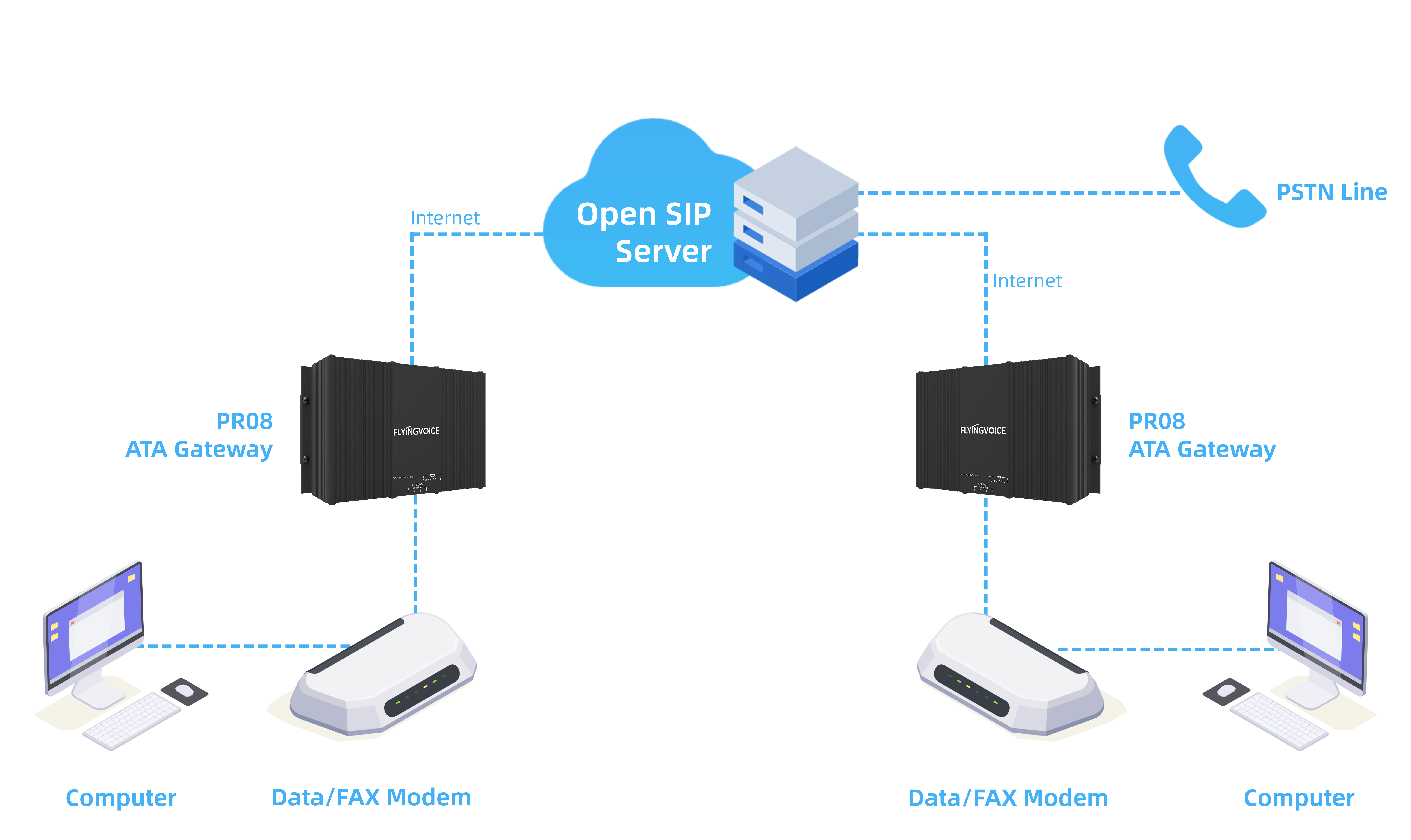Background
Modem data via POTS lines are common usages in various scenarios. One of the most popular scenarios is Point of Sale. PoS terminals are nearly everywhere. The most common locations include retail stores such as clothing stores, department stores, supermarkets, restaurants, etc.

PoS terminal
Modems allow the PoS computer to communicate with the banks or credit card processing centers to get the transaction approval or denial. The modem also allows daily transaction totals to be sent to other locations within the company such as corporate headquarters.
Modem data technology via the POTS line is very old-fashioned technology. However, it is still active today because of three major reasons, minimal data consumption, and speed requirements, lower cost associated with setup, and security of on-demand connection.
Time Changes And New Technology Face Challenges
Even though we know the POTS lines are suitable for this type of application, POTS line cost is rising, and older copper line networks make this solution more difficult to keep alive. It is wisdom to think about digital communication, VoIP provides more flexibility and easy communication through the Internet.

VoIP
However, you may run into problems when you replace dial-up modem call with VoIP. Regularly the VoIP account will register to Cloud PBX, and data transfer via the Internet, go through the SIP trunk or PSTN to remote headquarters. The quality of the telecom provider network is very sensitive for modem calls because the VoIP mechanism allows a few packages to drop during internet transmission, encoding analog signal and decoding digital signal will affect the raw modem data. G.711 coding is required, and only a good quality network could guarantee the complete transmission.
V.150.1, As Known As Modem Over IP
In order to solve the modem data call going through the internet, an alternative to G.711 passthrough is the use of ITU-T V.150.1, also known as Modem over IP, which demodulates and demodulates modem data at gateways, forwarding the data over IP between them.
V.150.1 Gateway is a standards-based implementation that incorporates reliable and efficient transport of any type of modem signal across IP networks by using Simple Packet Relay Protocol (SPRT).
Flyingvoice Feature Approval
Flyingvoice ATA such as PR08 FXS gateway supports V.150.1 feature which can be enabled by Web UI. Currently, PR08 supports low baud rate speed data calls through VoIP, if the other end doesn't support the V.150.1 feature, you just need to place two PR08 at each endpoint to replace the PSTN line, then the modem could dial up as usual as they did before.

connection topology
After more than 10 years of development, Flyingvoice has gained rich industry experience in VoIP and POTS solutions. We understand well that customers' needs for POTS replacement. If you have the technical ability to build your own POTS replacement solution, Flyingvoice will be the best choice for your hardware products.
If you have any questions or would like to learn more, feel free to visit our website at https://www.flyingvoice.com/.













 Back to list
Back to list









